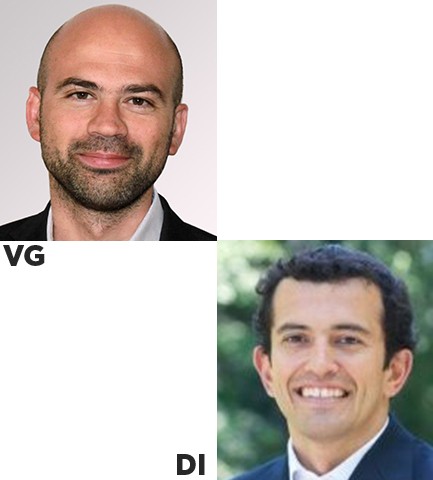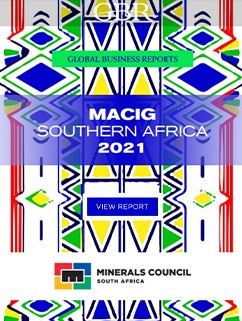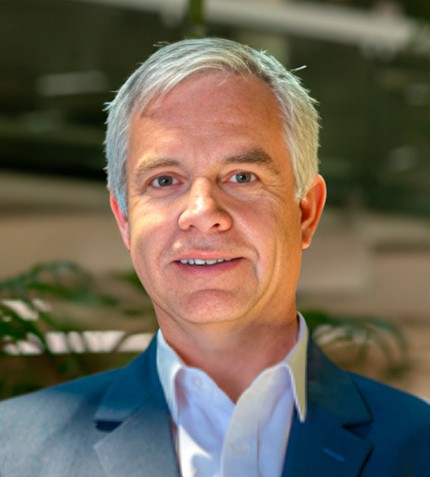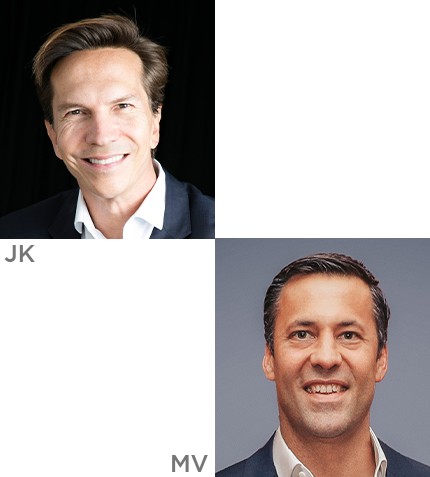
"We help mining companies understand how to put forward actionable roadmaps to achieve their decarbonization targets. We then actively work with them to integrate energy-efficient solutions and decarbonization levers into their operations."
RELATED PUBLICATION
Vincenzo Giordano & Diego Ibarra
ECTOR, SUSTAINABILITY SOLUTIONS & MANAGING DIRECTOR, ENGIE IMPACT
Can you give an overview of ENGIE Impact (ENGIE) and its history in the African region?
DI: ENGIE is a US$60 billion company employing 150,000 people. We have a strong focus on renewable power, hydrogen and ENGIE’s services to compliment businesses’ move towards decarbonization. Our sustainability consulting division, ENGIE Impact, supports companies, governments, cities and territories to rapidly and efficiently move towards decarbonization. We operate globally in three regions; the Americas, EMEA and the Asia Pacific. In Southern Africa, we focus on renewable power generation through wind and solar assets, and we aim to double capacity in the coming years.
VG: The company has installed approximately 1 GW of renewables in Africa, mainly in Egypt, Morocco and South Africa. We also have a considerable interest in further developing hydrogen applications across the region. We are currently carrying out several studies assessing the potential for hydrogen applications, focusing on green energy.
Can you elaborate on the sustainability solutions ENGIE offers to the South African mining industry?
DI: ENGIE Impact works with many of the top ten global mining companies, supporting them on both a corporate and operational level. We help them understand how to put forward actionable roadmaps to achieve their decarbonization targets. We then actively work with them to integrate energy-efficient solutions and decarbonization levers into their operations.
How is ENGIE contributing to the hydrogen valley project, and what is the potential for this to become a hub for hydrogen in the region?
VG: The hydrogen valley is the corridor ranging from the Mogalakwena region near Mokopane to Johannesburg and Durban. The idea is to try and concentrate hydrogen demand in the same area so that you can benefit from economies of scale and reduce costs to make hydrogen more competitive. We also want to identify various applications for hydrogen to have a diverse demand.
ENGIE Impact is delivering the study to assess which hydrogen hubs are feasible to develop. We identified a business case for three specific hubs where we think there is potential for bringing together multiple offtakes and locally producing green hydrogen. We hope to have completely developed the hydrogen valley project by 2030. Potential projects include the use of green hydrogen as a fuel for mining trucks and heavy-duty vehicles transporting goods through the corridor to the port in Durban.
Green hydrogen export is an exciting opportunity for South Africa. There are ports in South Africa that can serve this purpose as we see a growing demand for green hydrogen globally.
To what extent is South Africa leading the decarbonization revolution on the African continent?
VG: South Africa pledged for a net-zero carbon objective by 2050. Decarbonization is an opportunity for growth and economic development and the country sees it as a priority. South Africa is also well positioned for green hydrogen production.
South Africa is the leading country in Africa in terms of platinum mining. Platinum is a crucial mineral for electrolyzer fuel cells. The development of a green hydrogen economy can have a double effect – decarbonization and boosting the demand and production of minerals such as platinum, that are essential to the technology developments for the energy transition.
DI: The way the country is approaching decarbonization is not only from a centralized view but also from a hub perspective. The hub approach provides decentralized solutions to energy challenges and microeconomic incentives such as job creation. The South African government is leading with the right examples and putting all the right concerns on the table by pushing a decarbonization agenda and understanding the opportunities for social and economic development.
What is ENGIE’s strategy to consolidate growth and increase its market share over the next two years?
VG: With the energy transition, we believe that we will see significantly more opportunities to support industrial actors and governments on their decarbonization journey. I believe that the emphasis on green hydrogen will continue to increase over the next two years, allowing for more growth opportunities for ENGIE.
DI: South Africa will continue playing a key role in ENGIE’s growth, especially regarding green mining and the demand for green minerals.











